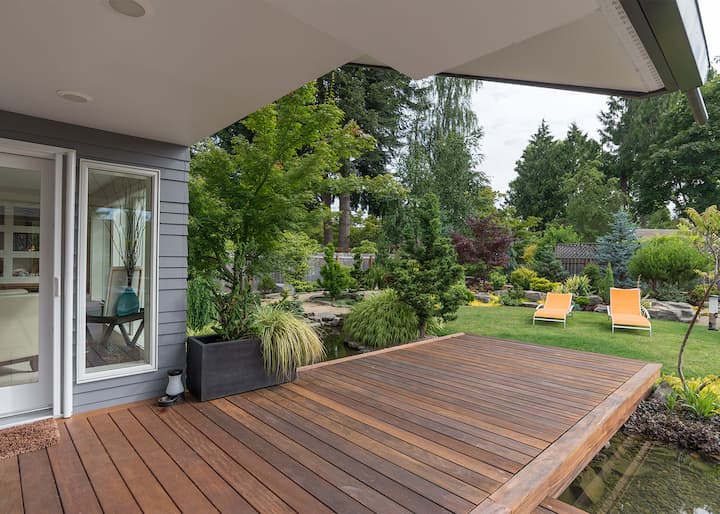
How to know what deck material is right for my situation?
When it comes to building a deck, choosing the right material is crucial. The material you choose will determine the durability, maintenance, and overall aesthetic of your deck. With so many options available, it can be overwhelming to decide which material is right for your situation.
However, by assessing your needs and budget, you can narrow down your options and make an informed decision.
Wood, composite, vinyl, and aluminum are the most common materials used for decking. Each material has its own unique advantages and disadvantages, and it’s essential to weigh these factors when making your decision.
By understanding the properties of each material and how they fit into your needs and budget, you can choose the perfect deck material for your project.
In this article, we will discuss the pros and cons of each material, so you can make an informed decision for your situation.
Assess Your Needs and Budget
An analytical and dispassionate evaluation of individual requirements and financial constraints is fundamental to determining the most appropriate deck construction material.
Before embarking on any deck construction project, it is essential to assess your needs and budget. Consider factors such as the climate in your area, the desired aesthetic, the expected foot traffic, and maintenance requirements.
Each deck material, such as wood, composite, or vinyl, has unique properties that affect durability, maintenance, and cost.
Additionally, determine your budget and weigh the initial installation cost against the long-term maintenance expenses.
By carefully considering your needs and financial constraints, you can select a deck material that provides the optimal balance of durability, aesthetics, and affordability.
Wood Decking
Wooden decking is a common option for outdoor spaces due to its natural aesthetic appeal and durability, making it a popular choice for homeowners seeking a long-lasting and visually pleasing addition to their property.
Wood decking comes in a variety of options, including pressure-treated pine, cedar, redwood, and tropical hardwoods like teak and ipe.
Pressure-treated pine is the most affordable option, but it is also the least durable and requires regular maintenance.
Cedar and redwood are more expensive but are naturally resistant to rot and insects.
Tropical hardwoods are the most expensive option but also the most durable and low-maintenance. However, their high cost and impact on the environment make them a less sustainable option.
When considering wood decking, it is important to assess your needs and budget as well as the specific characteristics of each type of wood to determine the best fit for your situation.
Composite Decking
While composite decking is often touted as an eco-friendly and low-maintenance alternative to wood, its production process actually involves a significant amount of energy and resources, making it a somewhat ironic choice for those seeking sustainable options.
Composite decking is made from a mixture of plastic and wood fibers, which are combined using heat and pressure to create a durable and weather-resistant material. However, the manufacturing process for composite decking involves the use of fossil fuels and the emission of greenhouse gases, which can contribute to climate change.
Additionally, composite decking is not biodegradable and can release harmful chemicals when it is disposed of improperly.
Despite these drawbacks, composite decking is still a popular choice for many homeowners due to its durability and low maintenance requirements.
Ultimately, the decision to use composite decking should be based on a careful consideration of one’s personal values and environmental impact.
Vinyl Decking
Vinyl decking, like composite decking, presents itself as a low-maintenance and durable alternative to wood; however, its use of non-renewable resources and potential negative impact on human health and the environment should be carefully considered before making a decision.
Vinyl decking is made from polyvinyl chloride (PVC), a synthetic plastic that is not biodegradable and requires the use of non-renewable resources in its production. Additionally, PVC can release toxic chemicals when burned, potentially harming human health and contributing to air pollution.
While vinyl decking may seem like an attractive option due to its low maintenance and durability, it is important to weigh the potential environmental and health impacts before making a decision. As with any building material, it is important to consider the long-term sustainability and impact on the environment when choosing the right decking material for your situation.
Aluminum Decking
Aluminum decking is a potential alternative to traditional wood and synthetic decking materials, offering a durable and low-maintenance option for those seeking a sustainable and environmentally conscious solution.
This type of decking material is corrosion-resistant, weather-resistant, and fire-resistant, making it a safe option for outdoor use.
Additionally, aluminum decking does not require regular staining or sealing, reducing maintenance costs and efforts.
Aluminum decking is also an eco-friendly option, as it is made from recycled materials and can be recycled at the end of its life cycle.
However, it is important to note that aluminum decking can be more expensive than other materials and may not provide the same aesthetic appeal as wood or synthetic options.
Ultimately, the decision to choose aluminum decking should be based on individual needs, preferences, and budget.
Get local quotes for all your Decks needs
Looking for professional Decks contractors in Houston,Texas? Reach out to us today to compare quotes from local experts!